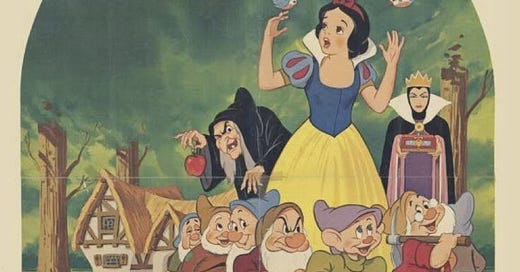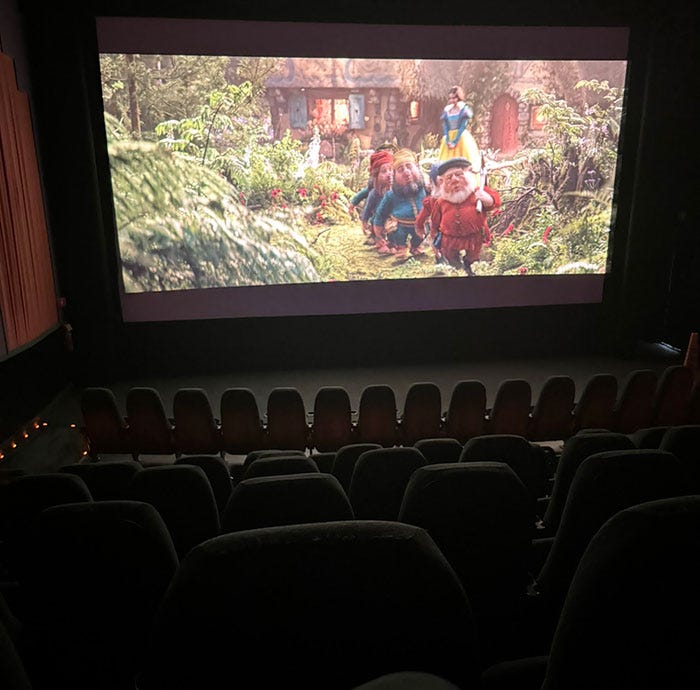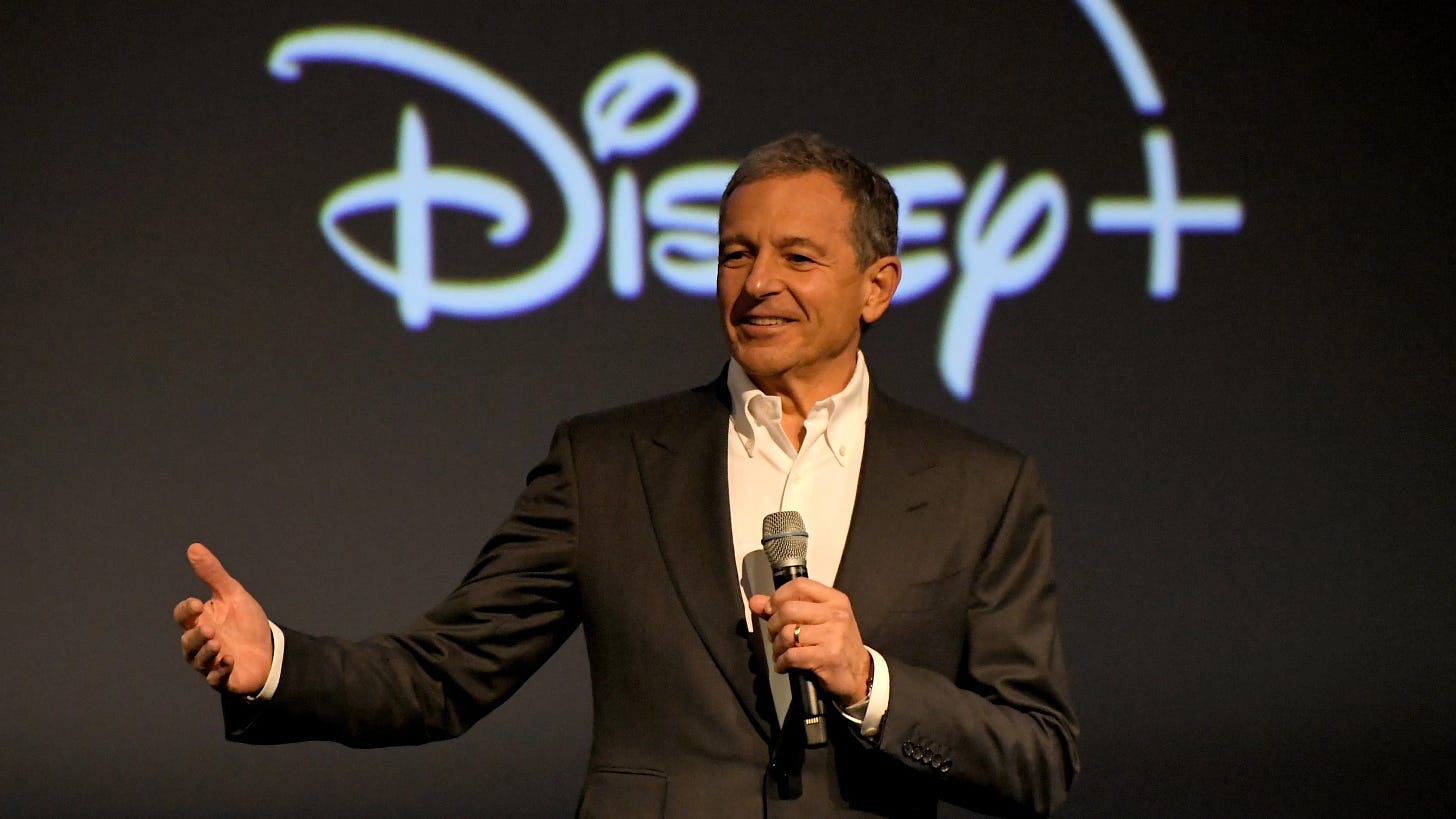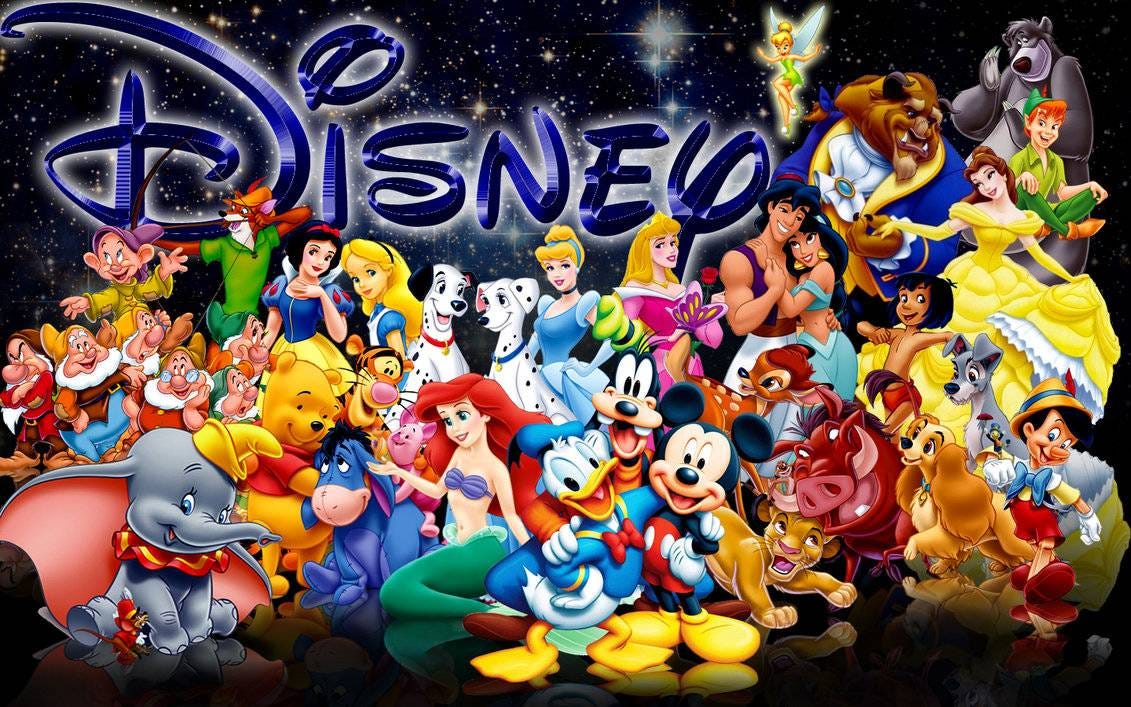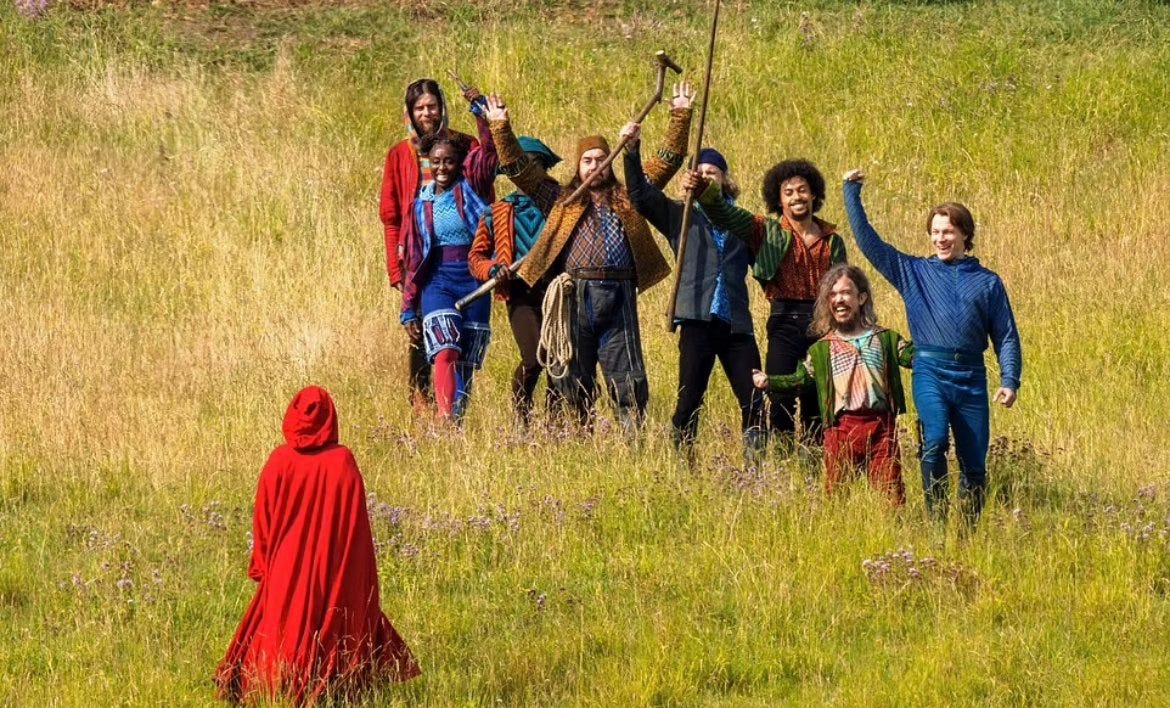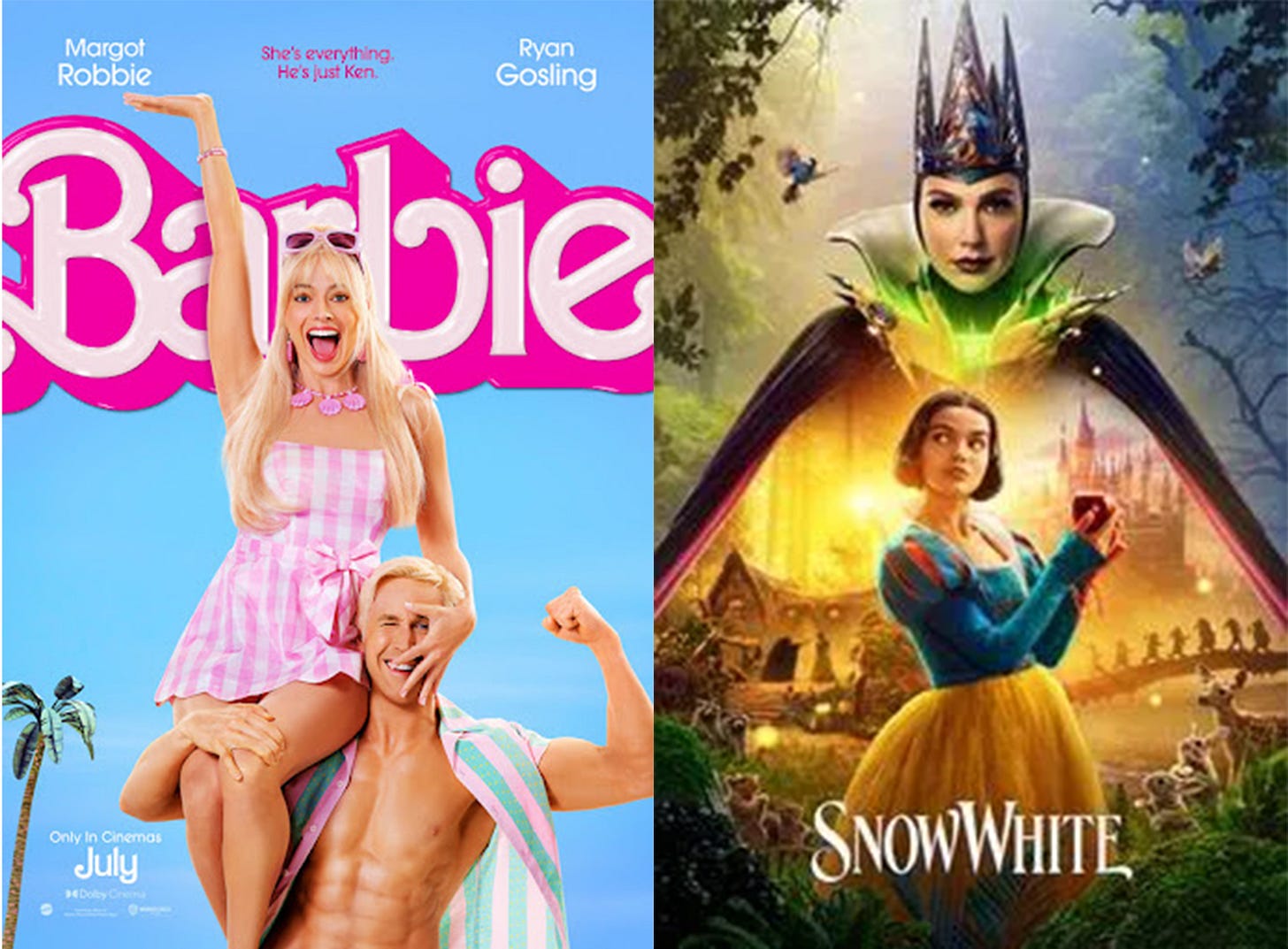Disney’s Snow White (2025): From Billion-Dollar Daydream to Grim Fairy Tale
How Disney’s 1937 Snow White Built an Empire and How the 2025 Remake Poisoned It
To fully appreciate Disney’s recent plunge down the financial wishing well, we need a quick stroll down memory lane, a lane paved with cartoon dwarfs, studio debt, and Walt Disney literally mortgaging his own home to finance the original Snow White.
Walt’s all-in bet paid off spectacularly, laying the cornerstone for what would become a global entertainment empire.
1937: Walt Disney debuts his very first animated feature, Snow White and the Seven Dwarfs. Industry experts, who clearly were never children, labeled the ambitious film “Disney’s Folly,” assuming audiences wouldn’t possibly sit through 83 minutes of animated singing animals and grumpy woodland miners. Well, those “experts” quickly learned two lessons: one, never underestimate the spending power of families; and two, don’t bet against a princess with talking birds on payroll. Snow White raked in a staggering $8 million globally against a budget of just $1.49 million, instantly becoming the highest-grossing film of its era.
The returns were swiftly funneled into the construction of Disney’s legendary Burbank studio lot, cleared the company’s debts, and practically built the magic-making machine we know today: theme parks, mouse-shaped ice creams, endless princess merch, and countless trips to therapy rooted in the death of Bambi’s mother. Snow White quite literally put Disney on the map, turning Walt’s risky little venture into an empire worth billions.
Fast-forward nearly nine decades later: Disney executives, likely staring wistfully at photos of that original mountain of cash, decided it was time to recapture that lightning, only this time, with real people and substantially more CGI. Cue 2025’s live-action remake of Snow White. Given the billion-dollar track records of modern remakes (Beauty and the Beast, Aladdin, The Lion King), the plan seemed as foolproof as casting Tom Hanks as anyone’s dad. Spoiler alert: It was not.
Setting the Bar Sky-High: Disney’s Billion-Dollar Fantasy Funnel
Snow White (2025) is nearing Disney’s worst-ever live-action remake, earning just $43M domestic, $87M global.
1. Global Box Office: From “Slam Dunk” to “How Did We Not See This Coming?”
Disney execs had confidently projected this film would easily net between $1.0–$1.3 billion worldwide. And who could blame them? Past live-action remakes like:
• Beauty and the Beast (2017): $1.26 billion (It had talking furniture. People love talking furniture.)
• Aladdin (2019): $1.05 billion (Will Smith as a blue genie? Worked better than expected.)
• The Lion King (2019): $1.66 billion (Cats, but actually successful.)
Given that Snow White is literally the original Disney princess, the one who started the tiara collection, the synergy team assumed it was an easy “billion-dollar slam dunk.” Turns out, it was more like dunking a brick underwater while blindfolded.
2. Merchandise & Licensing: $150–$250 million in Year 1.
• The Disney Princess line typically generates $3–$5 billion annually across all princesses. Snow White, being the grand dame of the brand, was supposed to spark a major consumer product surge: dolls, costumes, books, stationery, you name it.
Merchandise Shortfall: Retail sales plunged, leaving large amounts of unsold inventory and a 70% shortfall ($100–$175 million below projections).
3. Theme Park Synergies: $50–$100 million incremental revenue.
• Snow White-themed parades, meet-and-greets, special limited-edition merchandise, new ride overlays; these were all expected to drive significant foot traffic and spending at Disneyland, Walt Disney World, and beyond.
Theme Park Disappointment: Projected synergy revenue shrank dramatically from $50–$100 million to around $15–$20 million due to limited audience enthusiasm.
4. Streaming & Home Video: $100+ million.
• A triumphant theatrical run was supposed to translate into robust post-theatrical revenue—new Disney+ subscribers, healthy digital/Blu-ray sales, future licensing, etc.
Streaming & Home Video Decline: Anticipated revenue of $100 million decreased to about $30–$40 million, highlighting the film’s minimal post-theatrical appeal.
Combining box-office hopes, theme park tie-ins, merchandise dreams, and streaming aspirations, Disney confidently projected a first-year payday between $1.3–$1.5 billion from this single remake. And that was just the start, imagine the sequels, stage musicals, spinoffs, and endless licensing deals. The sky wasn’t even the limit; it was more like a polite suggestion.
Yet here we are, and the studio’s reality check has bounced hard. If the original Snow White financed entire Disney expansions, this remake might just force the finance department to install a permanent “money-lost” scoreboard.
No Charming Rescue, the Shares Askew: A Royal Flop’s Market View
Despite the thorough breakdown of Snow White (2025), including its box-office belly flop, merchandise meltdown, and PR nightmares, one glaring omission deserves the spotlight: the immediate fallout on Disney’s stock price. Because if there’s one thing Wall Street hates more than dwarfs turned into CGI sidekicks, it’s a major studio with a cratering tentpole.
The Stock Plunge: By the Numbers
Opening-Weekend Wipeout: A measly $42.2M debut triggered a 7% overnight drop—$12B gone poof.
Context: Worse than Lightyear’s 6% dip and The Marvels’ 3% tumble. Big yikes indeed.
The Bob Iger Factor: CEO Under Fire
Return Wasn’t So Magical: Iger’s comeback was meant to steady the ship, not steer it into an iceberg named Snow White.
Boardroom Tensions: Rumors swirled about accelerating his 2026 retirement.
Stockholder Quip: “Iger’s pixie dust lost its sparkle. We need fresh blood, not another princess flop.”
Bottom Line: Even the mightiest mouse can’t squeak by when the market sees a flagship princess movie bomb. Snow White wasn’t just a cultural misfire, it sparked an investor revolt that proved Wall Street punishes IP misuse even harder than box-office flops. Ouch.
Other Live-Action Misfires: The Remake Machine Grinds to a Halt?
This is no isolated incident. Disney’s streak of live-action remakes has shown serious fatigue:
• Dumbo (2019): $353M global on a $170M budget → a money loser.
• Mulan (2020): $70M global theatrical (plus uncertain Disney+ Premium Access revenue), overshadowed by controversies and pandemic.
• Pinocchio (2022): Skipped theaters entirely, earning a dismal 31% on Rotten Tomatoes.
• Peter Pan & Wendy (2023): Also Disney+, minimal buzz.
• The Little Mermaid (2023): A respectable $570M globally on a $250M budget—but still no breakout success.
Disney’s formerly bulletproof recipe of animated classic plus A-list celebs and mountains of CGI is looking less like a winning formula and more like grandma’s meatloaf: tired, reheated, and deeply suspicious. Audiences have begun sniffing out the studio’s “copy-paste” shortcuts, wary of heavy-handed updates overshadowing the timeless charm of the originals.
Snow White (2025) was supposed to restore faith in the magic formula. Instead, it dove headfirst into the slump, dug deeper, and politely asked for a shovel.
The Dwarfs Debacle: “We Have Magical Creatures Instead…”
Trouble began brewing early when actor Peter Dinklage publicly called out Disney for perpetuating “backward stories about seven dwarfs.” Disney, predictably, panicked. Instead of thoughtfully updating the roles with new, respectful angles, they swapped out the dwarfs entirely, giving Snow White a crew of CGI “magical companions” of varying sizes, backgrounds, and, inexplicably, species.
End result:
• Traditionalists: “You’re removing the dwarfs from Snow White and the Seven Dwarfs?!”
• Dwarf actors cried foul: “Why not just cast us instead of using average-height actors plus CGI?”
• Everybody else scratched their heads at leaked set photos of a motley band of regular folks in fantasy costumes, leading to endless jokes on social media.
This fiasco fueled the impression that Disney was so scared of old stereotypes that they ended up alienating more people than they appeased—a PR calamity.
Rachel Zegler: The Self-Described “Narcissistic” Drama Magnet
Enter the star: Rachel Zegler, cast as the modern Snow White. On paper, she’s a powerhouse vocalist (from West Side Story) with the youthful charm to lead a Disney tentpole. In reality, she lit controversies like fireworks on the Fourth of July:
1. Disrespecting the Classic: In multiple interviews, Rachel Zegler openly dismissed the beloved 1937 film’s romance plot as “weird,” playfully (but not really) labeled the prince a “stalker,” and proudly emphasized her Snow White was “not dreaming about true love.”
Unfortunately, what fans heard was less “fresh take” and more “Your cherished childhood favorite is hot garbage.” Cue instant heartbreak, immediate backlash, and a social media storm strong enough to blow the roof off Disney’s PR department.
2. Political Firestorms:
• A “free Palestine” remark overshadowed everything when co-star Gal Gadot (Israeli) began receiving death threats, forcing Disney to hire extra security.
• Resurfaced social posts wishing Trump supporters to “never know peace” triggered a wave of #BoycottSnowWhite from conservative corners.
3. Self-Labeling as a “Narcissist”: Zegler joked on Jimmy Kimmel Live that she’s an “extremely narcissistic person.” The internet seized on that, especially whenever she clapped back at random critiques.
Disney’s worst nightmare? A lead actress who seemed determined to churn up controversy faster than Cinderella could lose a shoe. By the time Snow White promos kicked into gear, Rachel Zegler’s interviews had become ticking time bombs, leaving Disney PR reps clutching stress balls and updating their résumés.
Insiders whisper Disney frantically tried assigning social media consultants to babysit Zegler’s online presence, but by then, the train had already derailed. The “Zegler Problem” had taken center stage, overshadowing the entire film and proving that sometimes, the fairest star of all is also the most flammable.
Two Queens, One Big Headache: Gal Gadot & The Political Tangle
Then there’s Gal Gadot as the Evil Queen. Normally, you’d leverage her star power to hype the film: an Israeli icon known for Wonder Woman, a global box-office draw. Instead, her presence became another political lightning rod:
• After Zegler’s “free Palestine” post, Gadot (an outspoken supporter of Israel) found herself inadvertently targeted by extremist hate.
• Disney was forced to keep the two actresses mostly apart in publicity, dodging any chance a reporter might throw them a Middle East question.
Red-carpet events turned weird, with minimal interviews, heavily restricted Q&A, and subdued fanfare. Instead of “Queens unite!” synergy, the studio was in full damage control, terrified of more headlines about Snow White’s internal or global conflicts.
Alienating the Fans: The Real Poison Apple
#boycottsnowwhite
At its core, Snow White (2025) managed to offend or alienate every major segment of Disney’s usual audience:
• Classic Disney Fans: Offended by the jettisoning of dwarfs, the mocking of the original romance, and the perceived “hostility” toward the 1937 film.
• Families Seeking Pure Magic: Turned off by the constant swirl of controversies—who wants to wade into culture-war territory just to watch a fairy tale?
• Little-Person Community: Felt excluded after the dwarfs became CGI or stand-ins.
• Politically Sensitive Viewers: Some bristled at Zegler’s outspoken posts, Gadot’s IDF background, others at the rumored toned-down approach after the blowback.
• General Moviegoers: Saw negative buzz, subpar marketing, stiff CGI in the trailer… and decided to spend their money elsewhere.
One top entertainment analyst summarized the fiasco by saying: “Disney didn’t just drop the apple, they dropped the entire orchard.”
Production Chaos: Delays, Fires, Reshoots—Oh My
To be fair, not all woes were self-inflicted:
• COVID-19 delayed pre-production.
• Fire at Pinewood Studios (U.K.) destroyed the cottage set, forcing expensive rebuilds.
• Hollywood Strikes (Writers & Actors) in 2023 shut down any chance for normal promotional tours, plus messed with final reshoots.
• Multiple Test Screenings: Rumor has it Disney held at least eight test screenings, each receiving middling responses. They poured money into reshoots, ballooning the budget from $200M to $250–$270M.
By the time the final cut hit theaters, even Disney’s marketing magicians couldn’t hide the frantic behind-the-scenes patch job. When the studio noticeably scaled back the usual hype machine, opting for minimal red-carpet events and press junkets, it was like quietly whispering, “Hey everyone, nothing to see here…please don’t look too closely.”
The Barbie Paradox: When “Woke” Pays Off Big
A big part of the narrative is the “woke backlash.” But let’s recall that Barbie (2023) soared to over $1.4 billion while weaving in feminist themes and social commentary. The difference?
• Barbie was comedic, meta, and affectionate about its source, despite poking fun. Barbie was every girls toy growing up.
• Snow White came across rewriting or rejecting the beloved core elements that defined the original. Unlike Barbie, Snow White isn’t inherently feminist IP—it’s a treasured cultural legacy established by Walt Disney himself in 1937.
• Barbie marketed itself brilliantly (#Barbenheimer, pink mania, star-studded parties).
• Snow White was overshadowed by controversies, star drama, and anemic promotion.
Clearly, audiences don’t automatically reject progressive storytelling. They do, however, reject preachy, joyless retreads that wag their finger at the beloved classics. In other words, it’s perfectly fine to update a fairy tale, just maybe don’t imply that Grandma’s favorite movie was morally bankrupt.
Conclusion: Happily Never After
In the crowded hall of fame for Hollywood faceplants, Snow White (2025) holds a truly special poisoned apple, a legendary blend of mistakes that transformed Disney’s most iconic princess from royalty into a cautionary tale.
Turns out, even fairy tales can end in disaster, especially if you spend $270 million to remind everyone how much better the original was.
Disney’s Lessons Learned (The “Wish We’d Thought of This Earlier” Edition)
Respect Nostalgia
Don’t treat nostalgia like a sloppy rebound. Honor the heart of the story (yes, the dwarfs and the prince matter).
Manage Your Star’s PR
“We’re the House of Mouse, not the House of Scandal.” Maybe a quick hush-hush class in “No, seriously, don’t tweet that.” If your lead actress trends for rants instead of singing, you’ve invited #BoycottSnowWhite to the ball.
Don’t Break the Magic Formula
If the recipe works, don’t throw out the main ingredient. Keep the dwarfs, keep the fun—or audience will leave your plushies on clearance racks. No synergy magic can salvage dog-toy plushies of “Magical Companions” nobody recognizes.
Keep Politics Out of Fairy Tales
Geopolitics + Fairy Tales = Awkward. Stick to singing woodland creatures, not Middle East conflicts on the press tour.
Charm, Not Lectures
If you’re peddling empowerment, wrap it in a spoonful of sugar, not a scolding side-eye. People want to enjoy themselves. A bit of sparkle and a nostalgic tune goes a long way. Gloomy reboots? Not so magical.
Walt Disney’s entire legacy began with Snow White, and it’s tragically poetic that her 2025 return ended in the biggest misfire of modern Disney remakes. The Evil Queen of 1937 wanted Snow White’s heart in a box; in 2025, Disney’s accountants might be demanding someone’s head for that missing billion dollars. Talk about a fairy tale turned grim.
The final moral? You can’t bank on brand recognition alone. If your “modernized” version feels like an unsolicited lecture—especially while your star is busy torching goodwill on social media, you’re practically handing out poison apples to your own audience.
The End… but the cautionary note remains: next time, ditch the culture-war fiascos and the preachy rewrites, and remember that a little enchantment (and a few actual dwarfs) can go a very long way.
(Who knew a simple story about a kind-hearted princess and seven dwarfs could spark so much drama in 2025? Yet here we are…)

